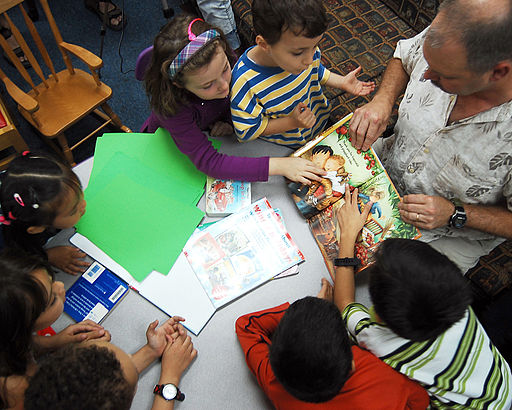Personality Development: Erik Erikson

Erikson’s discussions on the eight stages of personality development provide an interesting explanation on life span development. Half of Erickson’s stages pinpoint development of young learners. This article will discuss four stages of personality development, which relate to the development of young learners.
TRUST VERSUS MISTRUST
The first stage of personality development is “Trust versus Mistrust (birth to 18 months).” (Hamachek, 1998, p. 2) In the first stage of personality development in children, experiences will determine the level of trust and mistrust. (Hamachek, 1998) In the writer’s personal experience as an educator, shy and tentative learners tend to hold back in social situations, because of negative experiences. The writer has taught several students that needed to sit towards the back of class due to phobias and psychological illnesses. One student was ushered out of a basketball game, because of having a panic attack. In the first stage of trust versus mistrust, a child’s attitude will vacillate from the ability to collaborate with others and manifest positive views about life. In contrast, the mistrust aspect, a child’s overall attitude is negative about social situations and life in general. This stage provides insight into why some children start young with negative attitudes. As educators, we understand that parents, environment, and experiences will affect how a child views others and life in general. Consequently, early childhood providers have the challenge of motivating learners through encouragement and creating positive experiences.
What is your opinion regarding negative experiences and learning?
AUTONOMY VERSUS SHAME AND DOUBT
In the second stage of personality development of children, students experience “Autonomy versus Shame and Doubt (18 months to 3 years).” (Hamachek, 1998, p.2) In the second stage, student degrees of personal comfort and expression can be assessed. Since all stages are connected and lay a foundations for the next stage, stage one will affect the percentage of autonomy, shame, and doubt that a child exhibits. In retrospect, stage two can fluctuate based on environment. One parent was surprised that a child was shy and withdrawn in school, because at home the child exhibited outgoing behavior. When examining Erikson’s stages of personality development, all stages can vary based on specific situations. For example, the writer has issues with driving on the road with large flatbed trucks. The body tightens and memories of being trapped underneath a truck comprise negative memories. However, the writer loves driving and visiting locations especially when trucks are not on the road. However, children can overcome negative experiences by building positive experiences. The level of fear or doubt is based on the positive experiences that lay foundations over the negative ones.
INITIATIVE AND GUILT
In the third stage of personality development in children, initiative and guilt covers ages three through six. (Hamachek, 1998) In this stage, as children build trust and individuality, they take the initiative in social situations. (Hamachek, 1998) This observation of Erikson furthers influences educators to provide positive experiences to help learners increase developmental, cognitive, social, and emotionally. Although a student’s environment may be negative, education can expose students to a variety of social relationships and offer developmental outlets. When reflecting on this stage, students can participate in activities without quilt. In this area, students learn to enjoy personal preferences and the ability to self-direct projects and exhibit independence. It is encouraging to observe young children grow by taking the initiative to participate in challenging social settings. For example, the writer volunteered in a daycare center for a year. The daycare center serviced children starting at the age of two years old. The two year olds were the most challenging to adjust into the school setting. However, the strategy of walking around the center and allowing the two year olds to explore different learning areas helped learners to trust the environment and gradually take the initiative. Usually, two year olds could adjust within a week. However, Erikson is correct, three year old learners experience greater initiative.
INDUSTRY VERSUS IDENTITY CONFUSION
In the last or fourth stage of personality development in children, Erikson lists “Industry versus Identity Confusion (6 to 12 years).” (Hamachek, 1998, p.3) Following the first three stages, “an attitude that emerges as children learn to control their lively imaginations and apply themselves to formal education.” (Hamachek, 1998 ,p. 3) At the age of six, most children enter kindergarten and begin learning how to read, write, and solve simple math lessons. The writer was told when volunteering in a daycare center, not to teach students reading and writing to the state pre learners. As a fledgling teacher eager to teach, the author found it difficult not to share academic material. However, research and experience helps the author realize that learners need to be ready for learning. Purposeful and planned play are influential learning strategies for helping children. Furthermore, in the industry versus identity confusion stage, the planned play activities during the earlier years help six-year-old students to understand how to learn and develop confidence in personal ability.
Although there are eight stages, the author discussed four stages that reference child development. For anyone that has never read Erikson’s theory, the literature selection from author Don Hamachek evaluates “self concept and ego development within Erickson’s psychosocial framework.” (Hamachek,1998, p.1) Author Don Hamachek does mention a weakness of Erickson’s of personality stages by stating, “A weakness, however, has been in the ambiguity about what behaviors to look for during any particular stage that allow one to evaluate the status of a person’s psychological growth.” (Hamachek,1998, p.1)
A second literature selection provides a brief summation of Erikson’s stages of personality development. This literature selection mentions that “cognitive and social development occur hand in hand and cannot be separated.” (Morrison, 2004, p.126) “Children’s personalities and social skills grow and develop with the context of society and in response to society’s demands, expectations, values, and social institutions such as families, schools, and child care programs.” (Morrison, 2004, p. 126) The writer prefers this definition, because it provides a vivid explanation of motivating factors that influence growth. As an educator, quite often the writer observes social peer pressures, which influence students to strive or fail. Parental pressure can provide positive influence in the lives of young learners. This brief definition further helps educators realize the important roles that family and school can play in academic growth. Therefore setting high academic and personal goals can motivate students to accomplish various goals.
Erik Erikson's Eight Stages of Personality Development
In conclusion, Erikson’s stages of personality development provides educators with a template for understanding student growth. This article only discusses four stages, which relates to young learners. In the first stage trust versus mistrust, learner experiences determine the level of trust. The implication for educators is to provide positive learning and environmental experiences. Autonomy, doubt, and shame experiences are connected to the first stage of growth. Like the first stage, a foundation of positive experiences can replace negative experiences. In the third stage, initiative, and guilt, educators can provide a variety of social and learner activities to motivate student initiative. Hence, students can feel confident and comfortable with expressing personal feelings and creative ideas. In the fourth stage, identity versus identity confusion, students are ready to begin learning basic reading and math skills. Students continue to develop confidence when teachers and parents guide learning. Erikson’s developmental stages can help parents and educators cater resources and learning activities to meet learners’ needs.
References
Harnachek, D., E, (1988). Evaluating self-concept and ego development within erikson’s psychosocial framework: A formulation. Journal of Counseling & Development. Vol 66(8) p. 354-360 ISSN 0748-9633
Morrison, G., (2004). Theories applied to teaching and learning: Foundations for practice. Early Childhood Education (9e), p. 110-136. New Jersey: Upper Saddle River









